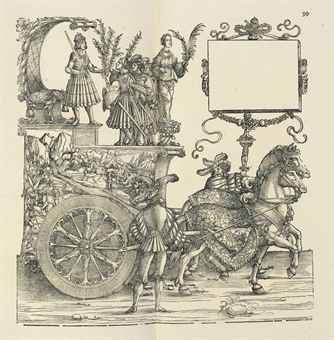Traitorfish
The Tighnahulish Kid
Presumably Domen also believes that Renaissance women were typically about nine foot tall.
There's also the characteristically Classical exaggeration of the fold of skin at his hip - nobody actually looks like that.
Hitler persecuted Catholics and was horrendously brutal towards Catholicism in the annexed territories.
Oh?You haven't even attempted to prove that medieval warhorses were bigger than today's horses, or even how big they were.
So am I: in Michelangelo's Pietá, if we take Jesus to be the height of an average human male, Mary is about nine foot tall.We are talking mostly about proportions of riders to horses in those sculptures.
People in the Renaissance didn't have body fat?
That must be why the Vatican concluded a concordate with Hitler Germany then.
Well, they certainly needed to be sturdier than a racehorse if they were supposed to carry knights in full armour onto the battlefield. Size apart, horses were in use well into the 20th century as workhorses also - not just to tow artillery, but for farming.


"I'm not saying it does...but it does"
Looking at the altered maps thread in OT has prompted a question NWIT. Why don't the borders in South America follow the Andes/Amazon line? It seems an obvious natural boundary, just as much as the Alps or the Sahara. But both the Incas and the modern states seem to spread from the Pacific coast across the Andes and into the rainforest. The one exception Argentina/Chile, but I seem to remember that Chilean claims stretched well into Patagonia until a century ago. Is there some geographic factor I'm not picking up on or is it just continent events as usual?
Why can I find nothing online about the Persian Gulf's shoreline changes? Apparently all of Al-Basrah was underwater in ancient times.
He's still wrong, though.
Not body fat that looks like that, especially not with that degree of musculature. I can't actually find a picture which I can post here within the realms of decency, but it's an exaggeration - as, indeed, many elements of Classical sculpture are, because perspective makes things look 'wrong' if they're actually done accurately.
Compare the inability of TV producers to actually use horse-hooves as sound effects, because people expect them to sound like coconut shells.
There are many reasons behind that one and I'm not informed enough to elucidate them, but that was from a practical realisation that the Church could do more good if it was not openly opposed to Hitler. There was certainly no love lost between them, simply practicality. Plotinus may have more insight into this.
People overestimate how heavy knights in armour were. When you put your armour on, the test of its fit was to be able to dance in it, so it can't have been that unwieldy.
Either:
You aren't searching correctly
You aren't searching in the right places
No such scholarship exists online
It's one of those three
JEELEN said:That must be why the Vatican concluded a concordate with Hitler Germany then.
I thought you just explained how Renaissance sculpture was not supposed to be accurate.
Coconuts? I expect horses' hooves to sound like horses' hooves.
Your claim was that Hitler persecuted Catholics. Hitler persecuted Jews and gypsies and other 'non-Germans' and Protestant and Catholic churches alike saw no problem with that. The concordate with the Vatican with right in with that attitude.
By 1940, a dedicated clergy barracks had been established by the Nazis at Dachau Concentration Camp. Of a total of 2,720 clergy recorded as imprisoned at Dachau, the overwhelming majority, some 2,579 (or 94.88%) were Catholic - among them 400 German priests
In the Polish areas annexed by Nazi Germany a severe persecution was launched from 1939. Here the Nazis set about systematically dismantling the Church - arresting its leaders, exiling its clergymen, closing its churches, monasteries and convents. Many clergymen were murdered. At least 1811 Polish clergy died in Nazi Concentration Camps. Hitler's plans for the Germanization of the East saw no place for the Christian Churches.
After constant confrontations, by late 1935, Bishop August von Galen of Munich was urging a joint pastoral letter protesting an "underground war" against the church.[47] By early 1937, the church hierarchy in Germany, which had initially attempted to co-operate with the new government, had become highly disillusioned. In March, Pope Pius XI issued the Mit brennender Sorge encyclical - accusing the Nazi Government of violations of the 1933 Concordat, and further that it was sowing the "tares of suspicion, discord, hatred, calumny, of secret and open fundamental hostility to Christ and His Church".[20] The Nazis responded with, an intensification of the Church Struggle, beginning around April
With the expansion of the war in the East from 1941, there came also an expansion of the regime's attack on the churches. Monasteries and convents were targeted and expropriation of Church properties surged. The Nazi authorities claimed that the properties were needed for wartime necessities such as hospitals, or accommodation for refugees or children, but in fact used them for their own purposes. "Hostility to the state" was another common cause give for the confiscations, and the action of a single member of a monastery could result in seizure of the whole. The Jesuits were especially targeted.
Nazi policy in the Sudetenland saw ethnic Czech priests expelled, or deprived of income and forced to do labour, while their properties were seized. Religious orders were suppressed, private schools closed and religious instruction forbidden in schools
Be that as it may, most horses were employed as workhorses. And neither use implies horses being of the slender type
